Saint Kitts and Nevis
Coordinates: 17°20′N 62°45′W / 17.333°N 62.750°W
| Federation of Saint Kitts and Nevis |
||||||
|---|---|---|---|---|---|---|
|
||||||
| Motto: "Country Above Self" | ||||||
| Anthem: "O Land of Beauty!" |
||||||
 |
||||||
_-_KNA_-_UNOCHA.svg.png) |
||||||
| Capital and largest city | Basseterre 17°18′N 62°44′W / 17.300°N 62.733°W | |||||
| Official languages | English | |||||
| Ethnic groups (2000) |
|
|||||
| Demonym | Kittitian or Nevisian | |||||
| Government | Parliamentary democracy under federal constitutional monarchy |
|||||
| • | Monarch | Elizabeth II | ||||
| • | Governor-General | Sir S.W. Tapley Seaton | ||||
| • | Prime Minister | Timothy Harris | ||||
| Legislature | National Assembly | |||||
| Independence | ||||||
| • | Associated State | 27 February 1967 | ||||
| • | from the United Kingdom | 19 September 1983 | ||||
| Area | ||||||
| • | Total | 261 km2 (207th) 104 sq mi |
||||
| • | Water (%) | Negligible | ||||
| Population | ||||||
| • | 2015 estimate | 54,961 (209th) | ||||
| • | 2001 census | 46,325 | ||||
| • | Density | 164/km2 (64th) 424/sq mi |
||||
| GDP (PPP) | 206 estimate | |||||
| • | Total | $1.458 billion[1] | ||||
| • | Per capita | $25,913[1] | ||||
| GDP (nominal) | 2016 estimate | |||||
| • | Total | $945 million[1] | ||||
| • | Per capita | $16,793[1] | ||||
| HDI (2014) | high · 77th |
|||||
| Currency | East Caribbean dollar (XCD) | |||||
| Time zone | (UTC-4) | |||||
| Drives on the | left | |||||
| Calling code | +1 869 | |||||
| ISO 3166 code | KN | |||||
| Internet TLD | .kn | |||||
| a. | Or "Federation of Saint Kitts and Nevis". | |||||
The Federation of Saint Kitts and Nevis (![]() i/seɪnt ˌkɪts ænd ˈniːvɪs/), also known as the Federation of Saint Christopher and Nevis,[3] is a two-island country in the West Indies. Located in the Leeward Islands chain of the Lesser Antilles, it is the smallest sovereign state in the Americas, in both area and population. The country is a Commonwealth realm, with the British monarch (currently queen Elizabeth II) as head of state.
i/seɪnt ˌkɪts ænd ˈniːvɪs/), also known as the Federation of Saint Christopher and Nevis,[3] is a two-island country in the West Indies. Located in the Leeward Islands chain of the Lesser Antilles, it is the smallest sovereign state in the Americas, in both area and population. The country is a Commonwealth realm, with the British monarch (currently queen Elizabeth II) as head of state.
The capital city is Basseterre on the larger island of Saint Kitts. The smaller island of Nevis lies about 2 miles (3 km) southeast of Saint Kitts across a shallow channel called "The Narrows".
The British dependency of Anguilla was historically also a part of this union, which was then known collectively as Saint Kitts-Nevis-Anguilla. To the north-northwest lie the islands of Sint Eustatius, Saba (the Netherlands), Saint Barthélemy, Saint-Martin/Sint Maarten and Anguilla. To the east and northeast are Antigua and Barbuda, and to the southeast is the small uninhabited island of Redonda, and the island of Montserrat, which currently has an active volcano (see Soufrière Hills).
Saint Kitts and Nevis were among the first islands in the Caribbean to be settled by Europeans. Saint Kitts was home to the first British and French colonies in the Caribbean, and thus has also been titled "The Mother Colony of the West Indies".
Etymology
Saint Kitts was named "Liamuiga", which roughly translates as "fertile land", by the Kalinago Indians who originally inhabited the island. The name is preserved via St. Kitts's western peak, Mount Liamuiga. Nevis's pre-Columbian name was "Oualie", meaning "land of beautiful waters".
Christopher Columbus upon sighting what we now call Nevis in 1493 gave that island the name San Martín. The current name "Nevis" is derived from a Spanish name Nuestra Señora de las Nieves. This Spanish name means Our Lady of the Snows. It is not known who chose this name for the island, but it is a reference to the story of a fourth-century Catholic miracle: a summertime snowfall on the Esquiline Hill in Rome. Presumably the white clouds which usually wreathe the top of Nevis Peak reminded someone of the story of a miraculous snowfall in a hot climate. The island of Nevis upon first British settlement was referred to as "Dulcina", a name meaning "sweet one" in Spanish. Eventually the original Spanish name was restored and used in the shortened form, "Nevis".
There is some disagreement over the name which Christopher Columbus gave to St. Kitts. For many years it was thought that he named the island San Cristóbal, after Saint Christopher, his patron saint and the patron hallow of travellers. New studies suggest that Columbus named the island Sant Yago (Saint James). The name "San Cristóbal" was given by Columbus to the island now known as Saba, 20 miles northwest. It seems that "San Cristóbal" came to be applied to the island of St. Kitts only as the result of a mapping error.
No matter the origin of the name, the island was well documented as "San Cristóbal" by the 17th century. The first English colonists kept the English translation of this name, and dubbed it "St. Christopher's Island". In the 17th century, a common nickname for Christopher was Kit, or Kitt. This is why the island was often informally referred to as "Saint Kitt's Island", further shortened to "Saint Kitts".
Today the Constitution refers to the state as both "Saint Kitts and Nevis" and "Saint Christopher and Nevis", but the former is the one most commonly used.
History
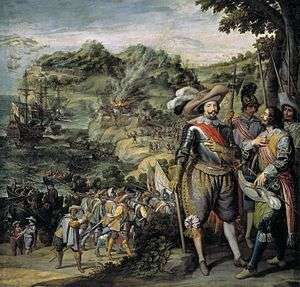
The islands of Saint Kitts and Nevis were settled by Native Americans five thousand years prior to European arrival. The last wave of Native American arrivals, the Kalinago people, arrived approximately three centuries before the Europeans. The islands were discovered by the Europeans through a Spanish expedition under Columbus in 1493.
In 1538, French Huguenots established a settlement on St. Kitts. The settlement was destroyed by the Spanish soon afterwards and the survivors were deported. In 1623 an English settlement was established. This was soon followed by French settlements, and the island being divided by an agreement between the colonists. The Spanish were superior to the Kalinagos in means of warfare[4] and the French and English were even more "economically aggressive and militarily determined" than the Spanish.[5]
The French and English, intent on self-enrichment through exploitation of the island's resources[6] understood from the start that their establishment of settlements in St. Kitts would meet with resistance, and such resistance was waged by the Kalinago throughout the first three years of the settlements' existence.[7] Throughout the process of establishing settlements on St. Kitts, as elsewhere in the Caribbean, the French and the English, like their predecessors, were intent on enslaving, expelling or exterminating the Kalinagos, since the latter's retention of land threatened the profitability of the European-controlled plantation economy.[8] To facilitate this objective, an ideological campaign was waged by colonial chroniclers, dating back to the Spanish, as they produced literature which systematically denied Kalinago humanity (a literary tradition carried through the late 17th century by such authors as Jean-Baptiste du Tertre and Pere Labat).[8]
In 1626, the Anglo-French settlers joined forces and committed genocide against the Kalinago, allegedly to pre-empt an imminent plan by the Caribs, conniving with the Kalinagos, to expel or kill;[9] or, according to Tertre's account, just kill[10] the European colonialists who had maintained their presence on the island by force for three years.
A Spanish expedition sent to enforce Spanish claims destroyed the English and French colonies and deported the settlers back to their respective countries in 1629. As part of the war settlement in 1630, the Spanish permitted the re-establishment of the English and French colonies.
As Spanish power went into decline Saint Kitts became the premier base for English and French expansion into the Caribbean. From St. Kitts the British settled the islands of Antigua, Montserrat, Anguilla and Tortola, and the French settled Martinique, the Guadeloupe archipelago and St. Barts. During the late 17th century France and England battled for control over St Kitts. The French ceded the territory to Britain in 1713.
Although small in size and separated by only 2 miles (3 km) of water, the two islands were viewed and governed as different states until the late 19th century when they were forcibly unified along with the island of Anguilla by the British. To this day relations are strained with Nevis accusing Saint Kitts of neglecting its needs.
Saint Kitts and Nevis along with Anguilla, became an associated state with full internal autonomy in 1967. Anguillians rebelled and separated from the others in 1971. St. Kitts and Nevis achieved independence in 1983. It is the newest sovereign state in the Americas. In August 1998, a vote in Nevis on a referendum to separate from St. Kitts fell short of the two-thirds majority needed.[11] In late September 1998, Hurricane Georges caused approximately $458,000,000 in damages and property and limited GDP growth for the year and beyond. Georges was the worst hurricane to hit the region in the century.
Politics

Saint Kitts and Nevis is a sovereign, democratic and federal state.[12] The Queen of Saint Christopher and Nevis, Elizabeth II, is its head of state. The Queen is represented in the country by a Governor-General, who acts on the advice of the Prime Minister and the Cabinet. The Prime Minister is the leader of the majority party of the House, and the cabinet conducts affairs of state. The country may also be described by the unofficial term, "Commonwealth realm", because it is a constitutional monarchy which shares the same monarch as some other members of the Commonwealth of Nations.
St. Kitts and Nevis has a unicameral legislature, known as the National Assembly. It is composed of fourteen members: eleven elected Representatives (three from the island of Nevis) and three Senators who are appointed by the Governor-General. Two of the senators are appointed on the advice of the Prime Minister, and one on the advice of the leader of the opposition. Unlike in other countries senators do not constitute a separate Senate or upper house of parliament, but sit in the National Assembly alongside representatives. All members serve five-year terms. The Prime Minister and the Cabinet are responsible to the Parliament.
Foreign relations
Saint Kitts and Nevis has no major international disputes. Saint Kitts and Nevis is a full and participating member of the Caribbean Community (CARICOM) and the Organisation of Eastern Caribbean States (OECS).
Military
Saint Kitts and Nevis has a defence force of 300 personnel. It is mostly involved in policing and drug-trade interception.
Administrative divisions
The federation of Saint Kitts and Nevis is divided into fourteen parishes: nine divisions on Saint Kitts and five on Nevis.
|
Geography

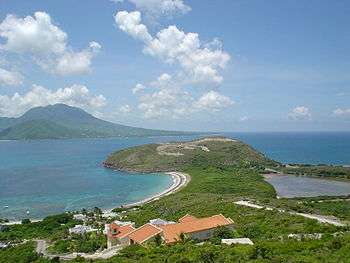
The country consists of two main islands, Saint Kitts and Nevis. The highest peak, at 1,156 metres, is Mount Liamuiga on St. Kitts.
The islands are of volcanic origin, with large central peaks covered in tropical rainforest; the steeper slopes leading to these peaks are mostly uninhabited. The majority of the population on both islands lives closer to the sea where the terrain flattens out. There are numerous rivers descending from the mountains of both islands, which provide fresh water to the local population. St. Kitts also has one small lake, a salt pond.
The national bird is the Brown pelican.[13]
Population
Demographics
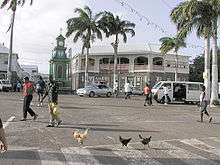
African descent 75.1%, Afro-European 12.3%, mixed race 5.3%, East Indian and Afro-East Indian 5%, Other 3.3%, South Asian ethnic groups 3%.[14]
In July 2000, there were 42,696 inhabitants; their average life expectancy was 72.4 years. Emigration has historically been very high, and high levels of such in the country has resulted in a continuous decrease in the country's population by about 25% since its peak of about 51,100 in 1960.
Emigration from St. Kitts & Nevis to the United States:[13]
- 1986–1990: 3,513
- 1991–1995: 2,730
- 1996–2000: 2,101
- 2001–2005: 1,756
- 2006–2010: 1,817
Religion
Most inhabitants are Christians, mainly Anglicans and other Protestant churches. The Roman Catholics are pastorally served by the Roman Catholic Diocese of Bridgetown (on Barbados), while the Anglicans by the Diocese of the North East Caribbean and Aruba.
Culture

English is the sole official language. Saint Kitts Creole is also widely spoken.
Saint Kitts and Nevis is known for a number of musical celebrations including Carnival (18 December to 3 January on Saint Kitts). The last week in June features the St Kitts Music Festival, while the week-long Culturama on Nevis lasts from the end of July into early August.[15]
Additional festivals on the island of Saint Kitts include Inner City Fest, in February in Molineaux; Green Valley Festival, usually around Whit Monday in village of Cayon; Easterama, around Easter in village of Sandy Point; Fest-Tab, in July or August in the village of Tabernacle; and La festival de Capisterre, around Independence Day in Saint Kitts and Nevis (19 September), in the Capisterre region. These celebrations typically feature parades, street dances and salsa, jazz, soca, calypso and steelpan music.
The 1985 film Missing in Action 2: The Beginning was filmed in Saint Kitts.[16]
Sports
Cricket is common in Saint Kitts and Nevis. Top players can be selected for the West Indies cricket team. The late Runako Morton was from Nevis. Saint Kitts and Nevis was the smallest country to host 2007 Cricket World Cup matches.[17]
The St. Kitts and Nevis national football team, also known as the "Sugar Boyz", has experienced some international success in recent years, progressing to the semi-final round of qualification for the 2006 FIFA World Cup in the CONCACAF region. Led by Glence Glasgow, they defeated the US Virgin Islands and Barbados before they were outmatched by Mexico, Saint Vincent and the Grenadines, and Trinidad and Tobago.
The St. Kitts and Nevis Billiard Federation, SKNBF, is the governing body for cue sports across the two islands. The SKNBF is a member of the Caribbean Billiards Union (CBU) with the SKNBF President Ste Williams holding the post of CBU Vice-President.
Kim Collins is the country's foremost track and field athlete. He has won gold medals in the 100 metres at both the World Championships in Athletics and Commonwealth Games, and at the 2000 Sydney Olympics he was the country's first athlete to reach an Olympic final. He and three other athletes represented St. Kitts and Nevis at the 2008 Summer Olympics in Beijing. The four by one hundred metre relay team won a bronze medal in the 2011 world championships.
American writer and former figure skater and triathlete Kathryn Bertine was granted dual citizenship in an attempt to make the 2008 Summer Olympics representing St. Kitts and Nevis in women's cycling. Her story was chronicled online at ESPN.com as a part of its E-Ticket feature entitled "So You Wanna Be An Olympian?" She ultimately failed to earn the necessary points for Olympic qualification.[18]
St. Kitts and Nevis had two athletes ride in the time trial at the 2010 UCI Road World Championships. Athletes included Reginald Douglas and James Weekes.[19]
Economy
Saint Kitts and Nevis is a twin-island federation whose economy is characterised by its dominant tourism, agriculture and light manufacturing industries. Sugar was the primary export from the 1940s on, but rising production costs, low world market prices, and the government's efforts to reduce dependence on it have led to a growing diversification of the agricultural sector. In 2005, the government decided to close down the state-owned sugar company, which had experienced losses and was a significant contributor to the fiscal deficit.
Former sugar plantations dominate the St. Kitts landscape. Many of the cane fields are being burned to make room for land development, especially on the northern side of the island, in the parishes of Saint John Capisterre and Christchurch. The agricultural, tourism, export-oriented manufacturing, and offshore-banking sectors are being developed and are now taking larger roles in the country's economy. The growth of the tourism sector has become the main foreign exchange earner for Saint Kitts and Nevis. The country has also developed a successful apparel assembly industry and one of the largest electronics assembly industries in the Caribbean.
St. Kitts is dependent upon tourism to drive its economy. Tourism to the island has been expanding since 1978. In 2009 there were 587,479 arrivals to Saint Kitts compared to 379,473 in 2007. This growth represents an increase of just under 40% in a two-year period. As tourism grows the demand for vacation property increases in conjunction.
In hopes of expanding tourism, St. Kitts hosts its annual St. Kitts Music Festival.
St Kitts & Nevis also acquires foreign direct investment from their citizenship by investment programme, outlined in their Citizenship Act of 1984. Interested parties can acquire citizenship if they pass the government's background checks and make an investment into an approved real estate development.
Transport
Saint Kitts and Nevis has two international airports. The larger one is Robert L. Bradshaw International Airport on the island of Saint Kitts with service outside to the Caribbean, North America, and Europe. The other airport, Vance W. Amory International Airport, is on the island of Nevis and has flights to other parts of the Caribbean.
Economic citizenship by investment
St. Kitts allows foreigners to obtain the status of St. Kitts citizen by means of a government sponsored investment programme called Citizenship-by-Investment.[20] Established in 1984, St. Kitts' citizenship programme is the oldest prevailing economic citizenship programme of this kind in the world. However, while the program is the oldest in the world, it only catapulted in 2006 when Henley & Partners, a global citizenship advisory firm, became involved in the restructuring of the program to incorporate donations to the country's sugar industry.[21]
St. Kitts' Citizenship-by-Investment programme offers multiple benefits. According to their official website: "When you acquire citizenship under the St. Kitts & Nevis citizenship programme, you and your family enjoy full citizenship for life, which can be passed on to future generations by descent. As citizens of St. Kitts & Nevis, you and your family are issued with passports which allow visa-free travel to more than 130 countries[22] and territories worldwide, including all of the EU. Of course you have the right to take up residence in St. Kitts & Nevis as well as in most of the CARICOM member countries at any time and for any length of time".[23]
Each candidate must go through several legal steps and make a qualifying investment into the country[23] and should complete certain legal requirements to qualify for citizenship under the investment programme. There is a minimum investment that has to be made by the applicant, in either an approved real estate or in the Sugar Industry Diversification Foundation (a public charity), to qualify for the economic citizenship of St. Kitts & Nevis.
According to Henley & Partners, the requirements are as follows:[24][25]
- An investment in designated real estate with a minimum value of USD 400,000, plus the payment of government fees and other fees and taxes
- A contribution to the Sugar Industry Diversification Fund of at least USD 250,000, inclusive of all government fees but exclusive of due diligence fees which are the same for the real estate option
The latest data indicates an acceleration in property appreciation when comparing it to the Department of Inland Revenue's 2009 statistics.
Health and education
There are eight publicly administered high/secondary level schools in St Kitts-Nevis, and several private secondary schools.
Public high/secondary schools
- Cayon High School (CHS)
- Basseterre High School (BHS)
- Washington Archibald High School (WAHS)
- Verchilds High School (VHS)
- Saddlers Secondary School (SSS)
- Charles E. Mills Secondary School (CEMSS)
- Charlestown Secondary School (CSS) NEVIS
- Gingerland Secondary School (GSS) NEVIS
Private high/secondary schools
- St Theresa's Convent School and St. Joseph's School, which merged in 2010 to form the Immaculate Conception Catholic School (ICCS) – Kindergarten to Grade 11 (or 5th form) – the traditional Caribbean final secondary school grade.
- Lyn Jeffers Secondary School
- Montesory Children's School
- SKI Academy School
Cancer Centre Eastern Caribbean
St Kitts and Nevis counts a cancer centre considered as a referral centre for the Eastern Caribbean located in Mount St. John Hospital in Antigua. This centre provides Caribbean citizens the opportunity to undertake radiotherapy and chemotherapy locally rather than travelling to the United States or United Kingdom.[26][27] The whole project was managed by Dr. Arthur Porter from the beginning.[26][28][29][30]
See also
Notes
- 1 2 3 4 "St. Kitts and Nevis". International Monetary Fund. 2016. Retrieved 1 April 2016.
- ↑ "2015 Human Development Report" (PDF). United Nations Development Programme. 2015. Retrieved 15 December 2015.
- ↑ Both the names Saint Christopher and Saint Kitts are given in the Constitution of Saint Christopher and Nevis
- ↑ Cobley, 1994, p. 24
- ↑ Cobley, 1994, p. 26
- ↑ Taylor et. al. (ed.), Patrick (2010). The Encyclopedia of Caribbean Religions, Volume 1 A-L. Urbana, IL, Chicago, IL, and Springfield, IL: University of Illinois Press. p. 886.
- ↑ Cobley, 1994, p. 28.
- 1 2 Cobley, 1994, p. 27.
- ↑ Jonnard, Claude M. (2010). Islands in the Wind: The Political Economy of the English East Caribbean. Bloomington, IN: iUniverse. p. Page number not available.
- ↑ Du Tertre, Jean-Baptiste. Histoire générale des Antilles habitées par les François, 2 vols. Paris: Jolly, 1667, I:5–6.
- ↑ "Nevis islanders apparently vote not to break away". Milwaukee Journal Sentinel. Associated Press. 11 August 1998.
- ↑ "Art. 1, Federation of Saint Kitts and Nevis Constitutional Order of 1983". pdba.georgetown.edu. Retrieved 2014-07-08.
- 1 2 USCIS Home Page at uscis.gov.
- ↑ Ben Cahoon (2000). "Saint Kitts and Nevis". worldstatesmen.org. Retrieved 17 July 2010.
- ↑ Cameron, pg.502
- ↑ "Missing in Action 2-The Beginning Review". Movies.tvguide.com. Retrieved 2 November 2011.
- ↑ "St Kitts ramps up to host ICC Cricket World Cup in 2007". www.caribbean.com. Retrieved 2016-11-22.
- ↑ ESPN – So You Wanna Be An Olympian? – E-ticket at sports.espn.go.com
- ↑ Rob Jones. "UCI Road World Championships 2010: Elite Men Results - Cyclingnews.com". Cyclingnews.com. Retrieved 2016-04-07.
- ↑ "Citizenship-by-Investment Introduction". Retrieved 17 June 2013.
- ↑ Abrahamian, Atossa Araxia. The Cosmopolites: The Coming of the Global Citizen. Columbia Global Reports. ISBN 978-0-9909763-6-3.
- ↑ "Visa Restriction Index 2006 to 2016". visaindex.com. Retrieved 2016-07-20.
- 1 2 "Saint Christopher & Nevis Citizen by Investment Regulations" (PDF). www.ciu.gov.kn. Archived from the original (PDF) on 16 August 2013. Retrieved 17 June 2013.
- ↑ Kalin, Christian H. (2015). Global Residence and Citizenship Handbook. Ideos Publications. ISBN 978-0992781859.
- ↑ "Citizenship Investment in St. Kitts and Nevis - Henley & Partners". www.henleyglobal.com. Retrieved 2016-07-20.
- 1 2 "Cancer Treatment Center in the Works For St. Kitts And Nevis". kittivisianlife.com/. 7 August 2011.
- ↑ "Work resumes on Eastern Caribbean cancer centre in Antigua". caribbeannewsnow.com/. 5 March 2013.
- ↑ "Don't Forget Arthur Porter". thestkittsnevisobserver.com/. 29 November 2013.
- ↑ "No proof Dr. Arthur Porter was acting as Sierra Leone diplomat when arrested in Panama, says envoy to Canada". thestar.com/. 4 June 2013.
- ↑ "In St. Kitts, passport 'sales' lead to escalating political drama". groups.google.com. 9 June 2014.
Sources
- Cobley, Alan Gregor; Department, University of the West Indies (Cave Hill, Barbados). History (1994). Crossroads of Empire: The European-Caribbean Connection, 1492-1992. Department of History, University of the West Indies. ISBN 978-976-621-031-1.
External links
- Government
- Saint Kitts & Nevis official government information service
- Saint Kitts & Nevis official government site
- St. Kitts & Nevis Citizenship-by-Investment Program
- Saint Kitts & Nevis official Investment Promotion Agency
- Saint Kitts & Nevis St Kitts Financial Services Regulatory Commission
- General information
- "Saint Kitts and Nevis". The World Factbook. Central Intelligence Agency.
- Saint Kitts and Nevis from OCB Libraries GovPubs
- Saint Kitts and Nevis at DMOZ
- St Kitts and Nevis country profile from the BBC News
- Maps
- GeoHack list of street, satellite, and topographic maps
- Caribbean-On-Line, St. Kitts & Nevis Maps
 Wikimedia Atlas of Saint Kitts and Nevis
Wikimedia Atlas of Saint Kitts and Nevis
- Population – Religion
- Tourism
- Nevis Tourism Authority – Official Site
- Saint Kitts Tourism Authority – Official Site
- Saint Kitts Music Festival – Official Website of the annual Music Festival
- News
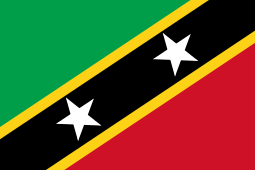
.svg.png)
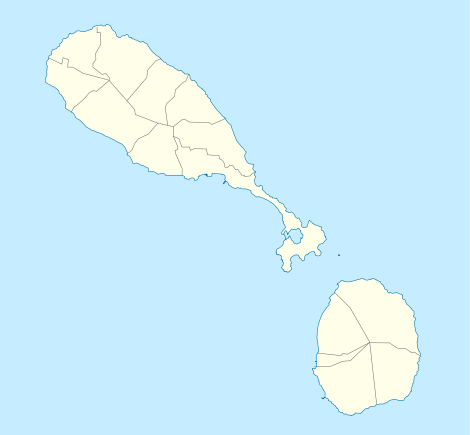


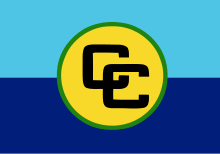
Countries.png)